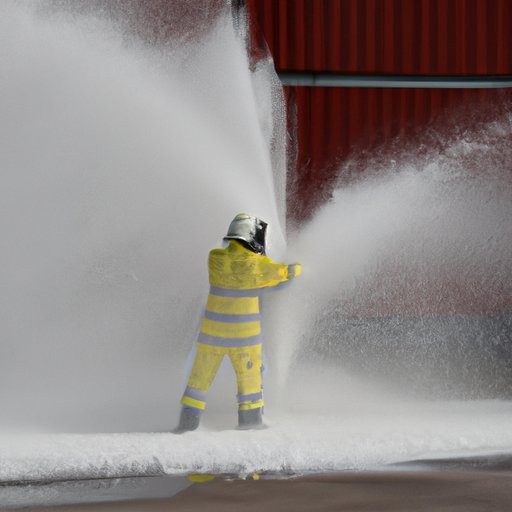Is Soy-Based Foam the Future of Firefighting Amidst PFAS Concerns?
Firefighting foams containing toxic PFAS have long been a concern due to potential health risks for both communities and firefighters. A recent article from Grist introduced a promising alternative: a PFAS-free foam made from soybeans. This innovation could be a significant breakthrough in safeguarding those who fight fires and the communities they serve. But how does this impact ongoing PFAS concerns, and what are the implications for litigation and regulation?

What Are the Health Risks Associated with PFAS Exposure?
PFAS, or per- and polyfluoroalkyl substances, are synthetic chemicals known for their persistence in the environment and the human body, earning them the nickname "forever chemicals." Exposure to PFAS is linked to reproductive issues, high cholesterol, and certain cancers. These health risks underscore the urgent need for safer alternatives to traditional firefighting foams.
How Does Soy-Based Foam Compare to Traditional Firefighting Foams?
Jeff King, a veteran firefighter and soybean farmer, expressed enthusiasm about the soy-based firefighting foam developed by Cross Plains Solutions. Known as SoyFoam, this PFAS-free alternative has garnered interest from fire departments across the Midwest due to its effective performance and safety credentials, making it an attractive option for reducing PFAS exposure.
Beyond its firefighting capabilities, SoyFoam represents a new market for soybean farmers, potentially boosting their livelihoods while addressing a critical public health issue.
What Is the Status of AFFF Litigation and PFAS Regulations?
The development of PFAS-free alternatives like SoyFoam is timely. Aqueous Film-Forming Foams (AFFF), which contain PFAS, are central to multidistrict litigation (MDL) involving numerous claims of health damages from PFAS exposure. As of 2025, Illinois law mandates strict management of PFAS contamination, reflecting a broader regulatory trend across the U.S.
The Environmental Protection Agency (EPA) and state authorities are urging industries to adopt safer alternatives, such as soy-based foams, to minimize PFAS contamination. This ongoing litigation and regulatory pressure highlight the urgent need for solutions like SoyFoam.
What Legal Rights and Compensation Options Exist for Affected Parties?
Individuals affected by PFAS contamination have several legal avenues for seeking compensation. In the context of the ongoing AFFF MDL, plaintiffs claim that PFAS exposure from firefighting foams has caused significant health issues. Affected individuals can participate in litigation to seek damages for medical expenses, lost income, and other related costs.
State laws, such as those in Illinois, increasingly hold companies accountable for environmental contamination, offering further legal recourse. It is crucial for individuals to consult with legal professionals specializing in environmental law to understand their rights and options.
What Steps Can Communities and Individuals Take to Reduce PFAS Exposure?
Reducing PFAS exposure requires a comprehensive approach. Communities should advocate for the adoption of PFAS-free products in local fire departments, like the soybean-based SoyFoam, to prevent further contamination. Monitoring and testing local water supplies for PFAS levels can help identify contamination sources and inform remediation efforts.
On an individual level, staying informed about PFAS contamination and advocating for stronger regulations can enhance environmental safety. Supporting policy changes and innovations like SoyFoam can drive the transition to safer, sustainable alternatives.
What Are the Recommended Next Steps for Those Concerned About PFAS Contamination?
If you're concerned about PFAS contamination, engage with local fire departments about their use of firefighting foams and the potential switch to PFAS-free alternatives. Collaborate with community leaders and policymakers to support regulations that limit PFAS use and promote safe alternatives.
For those experiencing health issues potentially linked to PFAS exposure, consulting with healthcare professionals and legal experts can provide guidance on treatment and compensation opportunities. Staying informed about ongoing litigation and regulatory developments will help you understand your rights and the actions being taken to address PFAS contamination.


